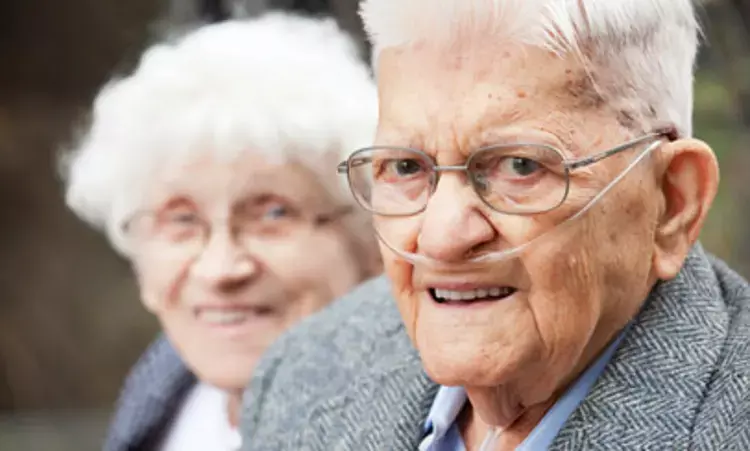- Home
- Medical news & Guidelines
- Anesthesiology
- Cardiology and CTVS
- Critical Care
- Dentistry
- Dermatology
- Diabetes and Endocrinology
- ENT
- Gastroenterology
- Medicine
- Nephrology
- Neurology
- Obstretics-Gynaecology
- Oncology
- Ophthalmology
- Orthopaedics
- Pediatrics-Neonatology
- Psychiatry
- Pulmonology
- Radiology
- Surgery
- Urology
- Laboratory Medicine
- Diet
- Nursing
- Paramedical
- Physiotherapy
- Health news
- Fact Check
- Bone Health Fact Check
- Brain Health Fact Check
- Cancer Related Fact Check
- Child Care Fact Check
- Dental and oral health fact check
- Diabetes and metabolic health fact check
- Diet and Nutrition Fact Check
- Eye and ENT Care Fact Check
- Fitness fact check
- Gut health fact check
- Heart health fact check
- Kidney health fact check
- Medical education fact check
- Men's health fact check
- Respiratory fact check
- Skin and hair care fact check
- Vaccine and Immunization fact check
- Women's health fact check
- AYUSH
- State News
- Andaman and Nicobar Islands
- Andhra Pradesh
- Arunachal Pradesh
- Assam
- Bihar
- Chandigarh
- Chattisgarh
- Dadra and Nagar Haveli
- Daman and Diu
- Delhi
- Goa
- Gujarat
- Haryana
- Himachal Pradesh
- Jammu & Kashmir
- Jharkhand
- Karnataka
- Kerala
- Ladakh
- Lakshadweep
- Madhya Pradesh
- Maharashtra
- Manipur
- Meghalaya
- Mizoram
- Nagaland
- Odisha
- Puducherry
- Punjab
- Rajasthan
- Sikkim
- Tamil Nadu
- Telangana
- Tripura
- Uttar Pradesh
- Uttrakhand
- West Bengal
- Medical Education
- Industry
Dynamic contrast enhanced MRI may reveal hemodynamic changes in idiopathic pulmonary fibrosis.

A new study revealed that dynamic contrast enhanced magnetic resonance imaging (DCE-MRI) can identify regional changes in pulmonary hemodynamics in Idiopathic pulmonary fibrosis obscured by global analysis. The study results were published in the European Respiratory Journal.
Idiopathic pulmonary fibrosis (IPF) is the most common idiopathic interstitial lung disease. Dynamic contrast-enhanced MRI (DCE-MRI) is used for the functional perfusion assessment mainly for the myocardium, brain and other oncological targets. Recently researchers conducted a prospective trial to apply quantitative and semiquantitative DCE-MRI methods to evaluate lung perfusion in idiopathic pulmonary fibrosis (IPF).
Using DCE-MRI at baseline 41 subjects including healthy control and IPF subjects, were assessed and the IPF subjects were then followed for 1 year. Among IPF patients progressive IPF (IPFprog) subjects were distinguished from stable IPF (IPFstable) subjects based on a decline in percent predicted forced vital capacity (FVC % pred) or diffusing capacity of the lung for carbon monoxide (DLCO % pred) measured during follow-up visits. For final baseline analysis 35 out of 41 subjects were retained. There were 15 controls; 14 subjects in IPFstable; and 6 in IPFprog. Seven measures and their coefficients of variation (CV) were derived using temporally resolved DCE-MRI. Two sets of global and regional comparisons were made: control versus IPF groups and control versus IPFstable versus IPFprog groups, using linear regression analysis. Each measure was compared with FVC % pred, DLCO % pred and the lung clearance index (LCI % pred) using a Spearman rank correlation.
Results:
DCE-MRI identified regional perfusion differences between control and IPF subjects using first moment transit time (FMTT), contrast uptake slope and pulmonary blood flow (PBF) (p≤0.05), while global averages did not.
IPFprog had shorter FMTT compared with both IPFstable (p=0.004) and control groups (p=0.023).
Correlations were observed between PBF CV and DLCO % pred (rs= −0.48, p=0.022) and LCI % pred (rs= +0.47, p=0.015).
Significant group differences were detected in age (p<0.001), DLCO % pred (p<0.001), FVC % pred (p=0.001) and LCI % pred (p=0.007).
Thus, DCE-MRI predicts regional changes in pulmonary haemodynamics in IPF that were concealed by Global analysis. Decreased FMTT may be a candidate marker for IPF progression.
BDS, MDS
Dr.Niharika Harsha B (BDS,MDS) completed her BDS from Govt Dental College, Hyderabad and MDS from Dr.NTR University of health sciences(Now Kaloji Rao University). She has 4 years of private dental practice and worked for 2 years as Consultant Oral Radiologist at a Dental Imaging Centre in Hyderabad. She worked as Research Assistant and scientific writer in the development of Oral Anti cancer screening device with her seniors. She has a deep intriguing wish in writing highly engaging, captivating and informative medical content for a wider audience. She can be contacted at editorial@medicaldialogues.in.
Dr Kamal Kant Kohli-MBBS, DTCD- a chest specialist with more than 30 years of practice and a flair for writing clinical articles, Dr Kamal Kant Kohli joined Medical Dialogues as a Chief Editor of Medical News. Besides writing articles, as an editor, he proofreads and verifies all the medical content published on Medical Dialogues including those coming from journals, studies,medical conferences,guidelines etc. Email: drkohli@medicaldialogues.in. Contact no. 011-43720751


